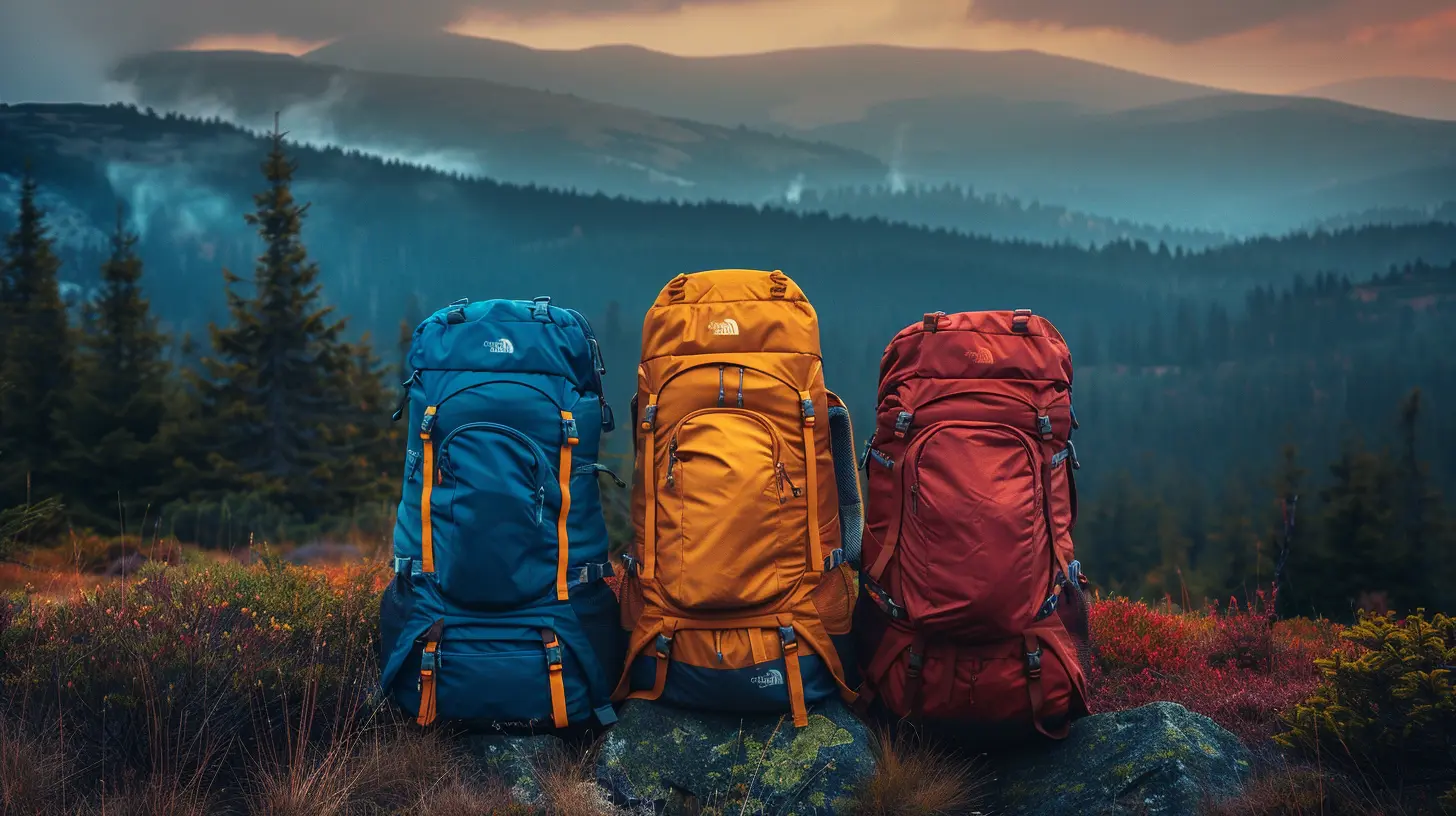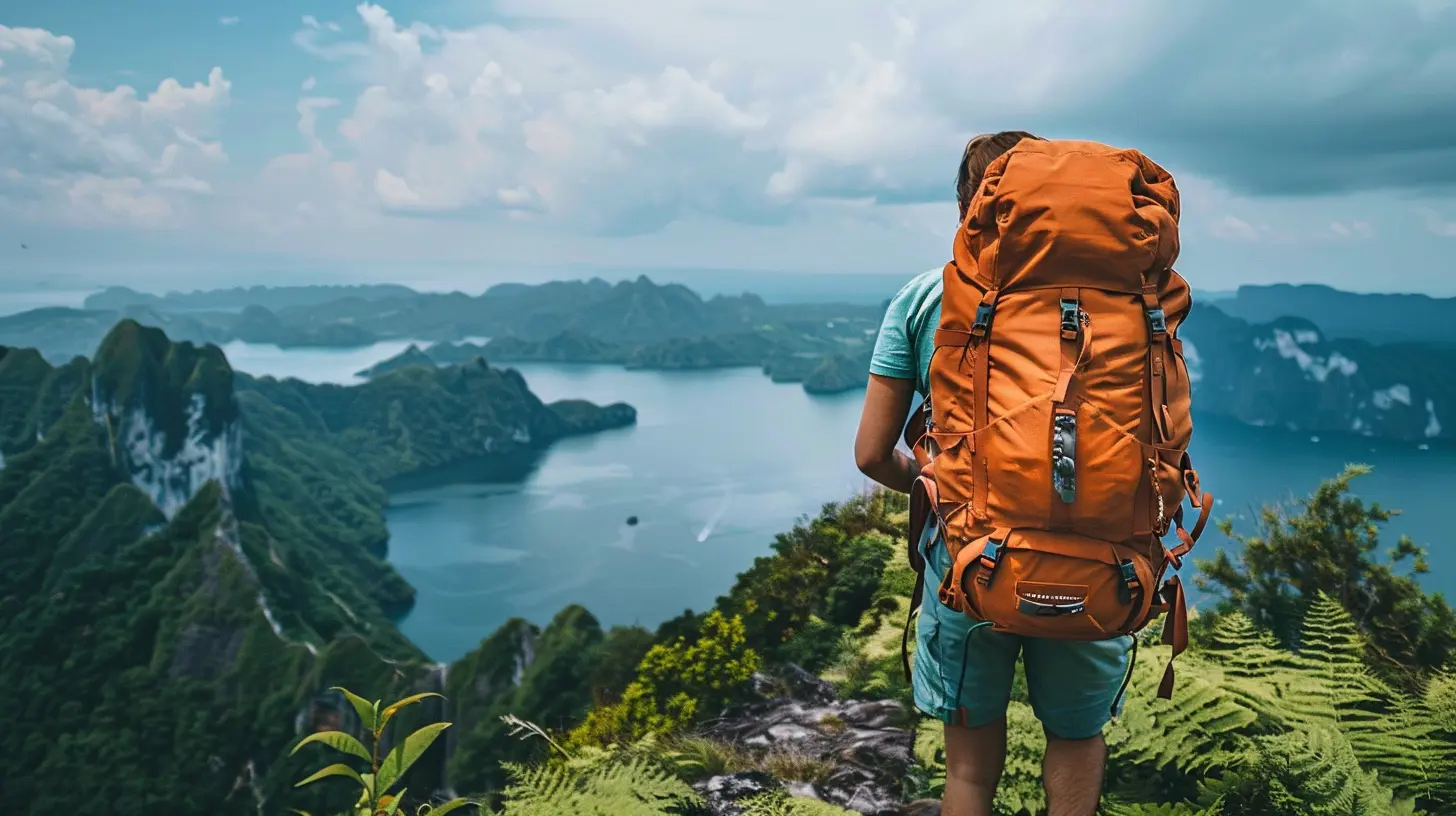How to Choose the Right Backpack for Long-term Travel
26 October 2025
So, you’ve decided to pack up your life and hit the road for an adventure of a lifetime? Fantastic! But before you start imagining yourself sipping coconut water on a Thai beach or hiking through the Andes, there’s one crucial decision you're probably overthinking right now—what backpack should you get?
Let me tell you, picking the right travel backpack is like choosing a life partner. It has to fit just right, support you through thick and thin, and never betray you when you need it most. A bad backpack will break your back, ruin your trip, and possibly make you cry in the middle of an airport. We don’t want that, do we?
So, let’s cut the confusion and break it down step by step to make sure you end up with the perfect travel companion. 
1. Size Matters (But Bigger Isn’t Always Better)
You might be tempted to get the biggest backpack possible because, hey, more space means more stuff, right? Wrong.A bigger bag means more unnecessary items, extra weight, and sore shoulders. The key is to find the Goldilocks size—not too big, not too small, just right.
Recommended Backpack Sizes:
- 30-40L – Ideal for minimalists and digital nomads who love packing light.- 40-50L – The sweet spot for most travelers, offering enough space without being too bulky.
- 50-70L – Only go this big if you’re carrying gear for hiking, camping, or bringing your pet llama.
Pro Tip: If your backpack looks like it could smuggle a small human, you’re overpacking. 
2. Comfort is King
If you’re going to be carrying this thing around for months, you need it to feel like a hug, not a medieval torture device.Key Comfort Features:
✔ Padded Shoulder Straps – Your shoulders will thank you.✔ Hip Belt – Takes the weight off your shoulders and makes you look like a serious traveler.
✔ Breathable Back Panel – Because nobody wants a sweaty back within five minutes of walking.
Try the backpack on with some weight inside before buying. If it already feels uncomfortable when empty, imagine how it’ll feel when packed with all your worldly possessions. 
3. Front-Loading vs. Top-Loading
This is a hot debate in the backpacking world. Should you go for a front-loading (clamshell style) backpack or a top-loading (hiking style) backpack?💼 Front-Loading:
✅ Opens like a suitcase (easy access)
✅ Great for staying organized
✅ Less digging around like it’s a bottomless pit
🎒 Top-Loading:
✅ Better for hiking and uneven terrain
✅ Usually more durable
❌ But… be prepared to dig through your stuff like a raccoon searching for snacks
Verdict? If you’re traveling to cities and hopping between hostels, a front-loading backpack is your best bet. If you're trekking in the wilderness, a top-loader might be better. 
4. Weight: Because You’re Not Training for the Olympics
Your backpack shouldn't weigh more than 15%–20% of your body weight when packed. If you’re carrying your entire wardrobe plus three books you swear you'll read (but won’t), it’s time to rethink your packing strategy.Aim for a lightweight but durable backpack. Anything over 2.5 kg (5.5 lbs) when empty is too heavy.
5. Durability: Your Backpack Needs to Survive Your Trip
Your backpack will go through a lot—baggage handlers tossing it like a sack of potatoes, getting squished in cramped buses, and, let’s be honest, probably serving as a pillow at some point.What to Look For:
✔ Weather-Resistant Material – Because getting caught in the rain happens more often than you think.✔ Lockable Zippers – Essential for keeping sticky-fingered pickpockets at bay.
✔ Reinforced Stitching – Weak seams are a disaster waiting to happen.
6. Compartments & Organization: Because Nobody Likes a Black Hole
Ever tried finding your passport in a messy backpack while the airport security guy gives you the side-eye? Not fun.Look for a backpack with multiple compartments to keep things neat.
- Main Compartment: For clothes and bulkier items.
- Front Pocket: Easy access to things like maps, snacks, and that crumpled boarding pass.
- Side Pockets: Perfect for water bottles (hydration is key!).
- Laptop Sleeve: If you're carrying electronics, a padded compartment is a must.
The more organized your backpack, the less time you’ll spend repacking every 12 hours.
7. The Carry-On Factor
If you’re sick of paying for checked luggage, find a backpack that fits carry-on size restrictions (usually 40-45L). Many airlines have varying rules, so double-check before you book that budget flight.Bonus: A carry-on-sized backpack means you can breeze through the airport like a pro while everyone else waits at the baggage carousel like lost souls.
8. Style Doesn’t Hurt Either
Okay, we get it—you need a practical, functional backpack. But can we also talk about style for a second?Bright neon colors scream "I’m a tourist! Please scam me!", while all-black can make you look like a suspicious character at border control. A neutral or muted color? Perfect balance.
Consider something that won’t look filthy after two weeks on the road. Those beige backpacks? Yeah, they’ll turn brown real fast.
9. Price vs. Quality: Finding the Sweet Spot
The price of backpacks ranges from "That’s cheaper than a pizza" to "I guess I’ll have to sell a kidney."While you don’t need to spend a fortune, a cheap $20 backpack from a random street vendor will probably fall apart before you even reach your destination.
Expect to spend around:
- $80 - $150 for a solid mid-range backpack
- $150+ for a high-end, ultra-durable travel pack
Brands like Osprey, Deuter, Nomatic, and Tortuga make some of the best travel backpacks out there.
10. Try It On Before You Buy
If possible, visit a store and try on a few backpacks with weight inside. This is crucial since each backpack feels different depending on your torso length, body shape, and personal preference.If you're ordering online, check the return policy. Nothing’s worse than getting stuck with an expensive backpack that feels like wearing a medieval torture device.
Final Thoughts: The One Backpack to Rule Them All
At the end of the day, the perfect backpack depends on your travel style, needs, and how much stuff you're willing to lug around.✔ Going ultralight? Get a 35-40L backpack.
✔ Want balance? A 40-50L travel backpack is your best bet.
✔ Hiking and camping? A sturdy 60L+ backpack makes sense.
Remember, your backpack is your travel home—it should be comfortable, practical, and not make you look like a turtle struggling to stand upright.
Now, go forth and choose wisely! Your back (and future travel self) will thank you.
all images in this post were generated using AI tools
Category:
BackpackingAuthor:

Kelly Hall
Discussion
rate this article
1 comments
Zedric Shaffer
Choosing the right backpack for long-term travel is crucial; consider factors like capacity, comfort, and accessibility. Prioritize durability and features that suit your travel style to enhance your overall journey.
November 1, 2025 at 5:08 AM

Kelly Hall
Thank you for your insightful comment! You’ve highlighted essential factors that can significantly impact the travel experience. Happy travels!


